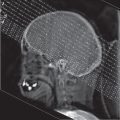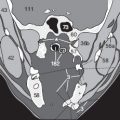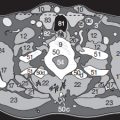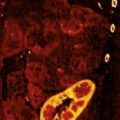Preparing the Patient
Medical History
Following a period of fasting (the day of the examination), and prior to any CT examination, a thorough medical history needs to be obtained which focuses on factors that may represent a contradiction to contrast media or indicate an increased likelihood of a reaction. In patients with suspected renal dysfunction baseline blood urea nitrogen and creatinine levels should be obtained (see below). It is important to note whether prior CT images are available for comparison. Information about prior surgery and radiation therapy in the anatomic region to be examined by CT is also important. Careful consideration of the pertinent radiologic findings on the current context with prior results and the patient’s clinical history allow the radiologist to render a meaningful differential diagnosis.
Adverse CM-Induced Reactions and Their Prophylaxis
Contrast agents are drugs, and as such, have the ability to induce adverse reactions. CM-related adverse drug reactions (ADR) can be classified as type A (predictable, dose-dependent, related to the pharmacological properties), and type B reactions (unpredictable, uncommon, and usually not related to the pharmacological properties) [8].
Renal Toxicity (Type A Reactions)
All available and FDA-approved contrast agents are nephrotoxic. Iodinated contrast agents are renal excreted, and can disturb the renal hemodynamics, induce apoptosis, and have tubular toxicity [13a]. These pathological events may lead to contrast-induced acute kidney injury (CI-AKI). To avoid CI-AKI, serum creatinine should be measured ( Table 18.1 ), and estimated glomerular filtration rate (eGFR) should be calculated ( Table 18.2 ), before the patient receives the contrast medium [13c]. The body surface area can be calculated by the square root of (body weight [kg] x body height [cm], divided by the factor 3600), e.g.: 187 cm x 90 kg = 16830 / 3600 = 4.675; [13d]. Dependent on the eGFR value, different prophylactic actions (e.g., hydration, injection of low-dose contrast, omission of contrast, and performing a noncontrasted scan) are necessary.
Patients with dialysis-dependent renal insufficiency can be divided into two groups: with or without residual renal function. Preservation of the renal residual function is important because it is a predictor of higher survival. A recent meta-analysis showed that intravascular applied contrast might not result in a significant reduction of the residual renal function in such patients [13b]. Therefore, an immediate dialysis following the injection of an iodinated contrast agent is not necessary.
Male 0.8–1.2 mg/dl 70–106 μmol/l | Female 0.7–1.0 mg/dl 62–88 μmol/l |
Ratio 1mg/dl = 88.42 μmol/l 1 μmol/l = 0.011 mg/dl | |
Renal Insufficiency
| GFR [ml/min/1.73m2]
| Clinical Correlation
|
I II III IV V | > 90 60–89 30–59 15–29 < 15 | Normal Findings Mild Renal Insufficiency Moderate Renal Insufficiency Severe Renal Insufficiency Renal Failure |
Stay updated, free articles. Join our Telegram channel

Full access? Get Clinical Tree








